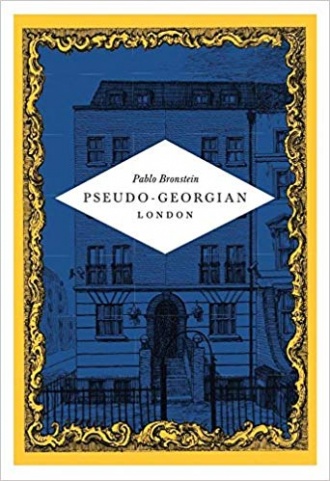This is the last article you can read this month
You can read more article this month
You can read more articles this month
Sorry your limit is up for this month
Reset on:
Please help support the Morning Star by subscribing here
Pseudo-Georgian London
by Pablo Bronstein
(Koenig Books, £15)
“WHY should we be interested in a developer-led building style which measures its success by how easily it merges into the anonymous ranks of the housing stock?”

That’s what Pablo Bronstein ponders in the preface to his book on London's pseudo-Georgian architecture and, when I first heard of the British-Argentinian artist’s project, I was baffled by the same question. From the tacky terraces of London’s East End to the “both primitive and clever” Holloway Road Waitrose —where, my mother used to observe, every customer has the face they deserve — I know many of these monstrosities too well.
I had always preferred to avoid them on my journeys, telling myself they were merely the product of cretinous architects self-censoring to the specifications of neoliberalism. On this, Bronstein agrees. But, he contends, that’s no reason to shy away from interrogating the ideology which tells us that “sophistication can be had on the cheap.” The pseudo-Georgian may appear an aberration, but it is a “true vernacular style.”
Most of this volume is taken up by Bronstein’s Hogarthian drawings of the buildings, also displayed in an RIBA exhibition last year. Some are naturalistic depictions, while others take considerable liberty, often accompanied by pleasingly understated descriptions in the blurbs below.
The “tiny little hovel” of 2 Lauriston Road, London E9 has been portrayed in a “suitably rustic setting,” the artist writes. For anyone in doubt, this apparently means depicting it sprouting out of an overgrown precipice of what can only be called a vomit of neo-classical excretion.
While the neo-Georgian, which reached its height in the Edwardian age, “dragged limply on until around 1960,” the pseudo-Georgian came later after a “national intake of breath,” the collapse of Ronan Point and the subsequent reaction against tower blocks.
Bronstein maps this trajectory in parallel with the rise of conservation and the trend of restoring 18th and 19th century houses. “By the 1980s,” he writes, “many people that had wanted to buy a historic property in one of the regenerated areas [of London] found they couldn’t afford one, so settled for the recreated version.”
And it would be the Georgian above all else that was evoked and faked thanks to this period being both “particularly buoyant in British history” and a time of “large-scale economic enfranchisement of the middle classes,” which chimed with the values of Thatcherism.
Bronstein’s meticulous analysis of these buildings’ features jars mainly because it exposes how little this tissue of affectation has been interrogated. This is reason enough to admire his project but, through bringing this movement to life beyond its value with his drawings, Bronstein has made this a joyous voyage of discovery too.

 Conrad Landin
Conrad Landin







